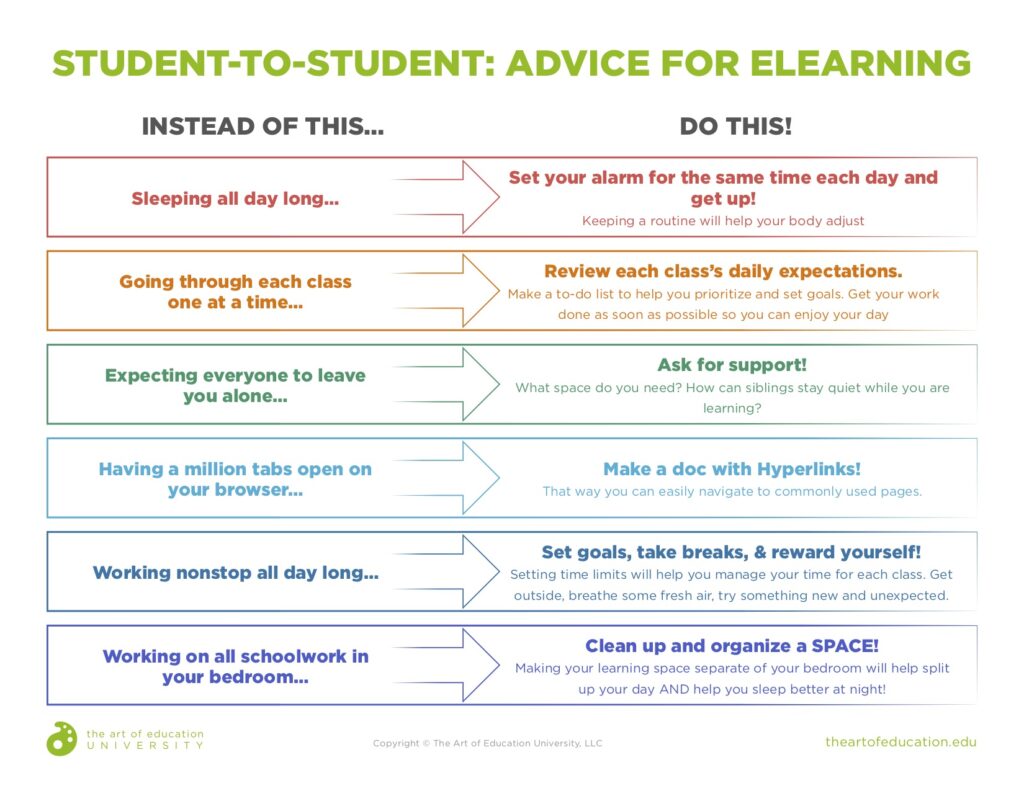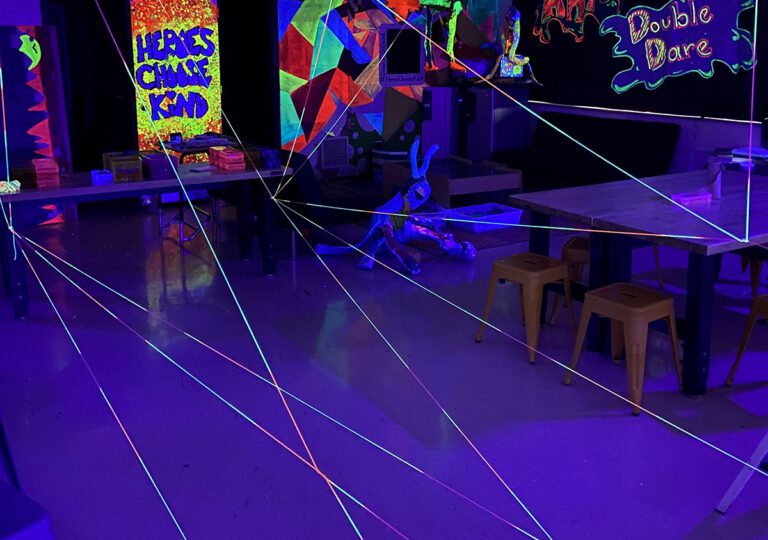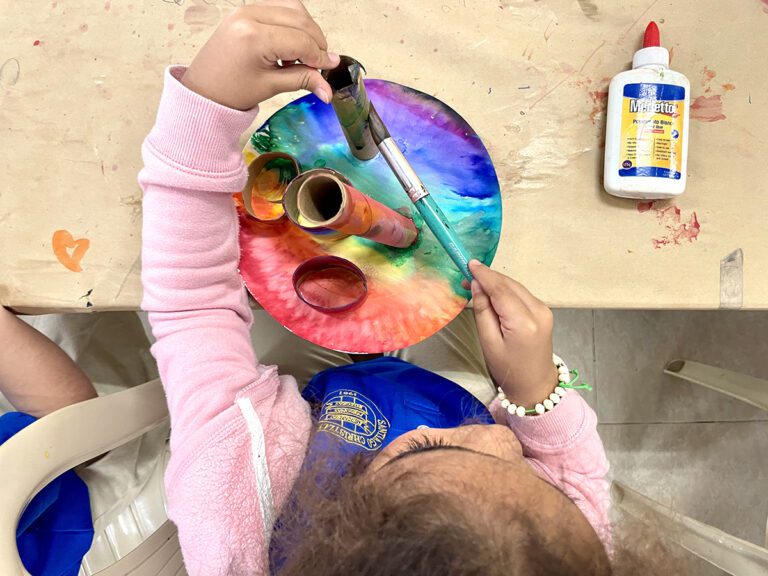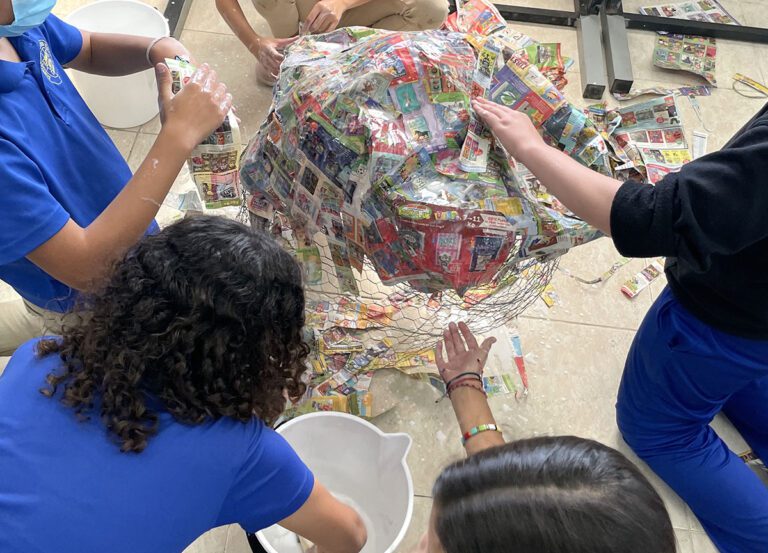Art Education and the Coronavirus (COVID-19)
When transitioning to online learning, it is an adjustment to be juggling our home lives with revamping the curriculum to fit our new environments. We are all so keenly aware of the challenges we are going through. But, what do students say about changing to online learning? Here are some tips from my students to yours. (These tips are certainly applicable to us teachers as well.)

Set your alarm and wake up.
It’s easy to lounge in bed all day long, playing video games. Even students know this does not help their emotional status. Take a day or two to grieve and binge on games and movies, but then get yourself back into a routine. Set your alarm, and get your work done early so you can relax guilt-free.
Submit attendance and review your classes for the day.
Some districts are requiring attendance to be submitted for the day; some are asking for each class. Students suggest to mark attendance for each class and keep track of which classes you’ve already submitted. Then, before diving into anything specific, take time to review the expectations for each class. Making a to-do list will help you prioritize—plus, it feels good to check items off as you complete them.
Communicate your needs.
Asking for help comes in more forms than just emailing your teacher. You might need to ask your siblings to give you space when trying to work. Maybe you need help scheduling your chores with your computer time. Perhaps you have to ask your best friend to stop texting you during your learning hours. It’s important to figure out what’s working and what’s not and to ask for support.
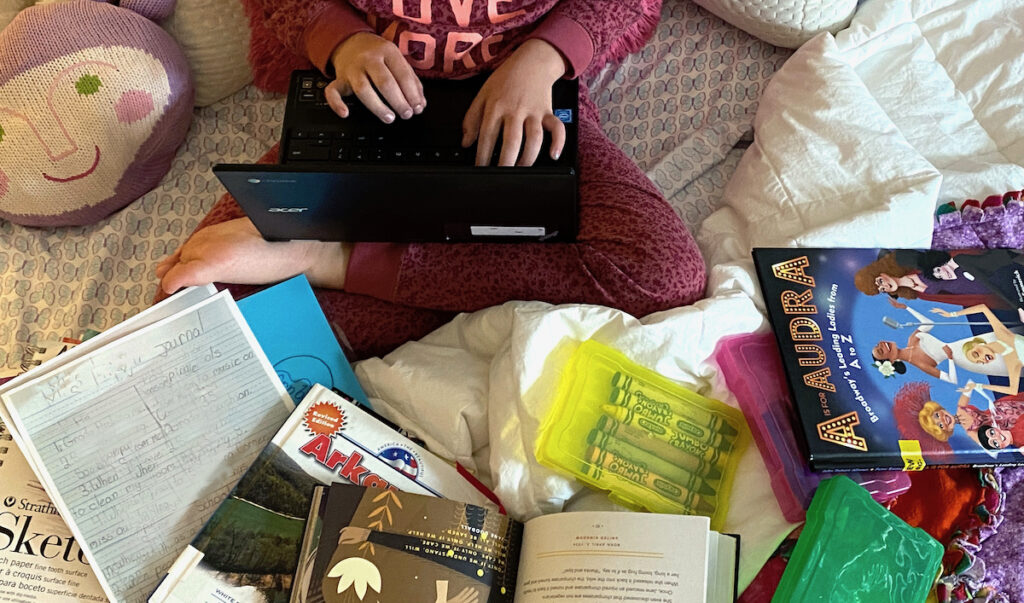
Make a document with all your important links.
It’s nearly impossible to bookmark everything on your browser, and it’s even more frustrating to move from tab to tab. Instead, create a Google Doc with all your important links so you can easily navigate to each class. As a teacher and parent, I highly recommend this tip. There are so many different learning apps, it’s hard to keep track of it all.
Make a plan and set time limits.
Once you have your to-do list, set time limits for each course. It’s easy to spend hours on your artwork and not get to your other classes. Setting time limits helps you monitor your progress and give you breaks throughout the day. Students also suggest getting your work done early in the day, so you have plenty of time left to enjoy, especially as our daylight is lasting longer and longer.
Set up your workspace away from distractions.
It’s easy to turn on the television and procrastinate when learning is solely up to you. Setting up good study habits is a challenge in the after-school hours, none-the-less when school is happening out of your bedroom. Find a quiet space free from distractions. While your bedroom may be the quietest space, it’s not the best to work all day on a computer and then attempt to sleep. Plus, your family might want to see your face once in a while. Setting up your workspace will be one of the most important things you do to make eLearning successful.
Reward yourself.
Sticking to your time limits should come with payoff! Write down a list of activities you would prefer to partake in besides your eLearning. Use these as a reward system for every hour of work you complete. Play a half-hour of video games, go for a walk in between classes, or set up a phone call with a friend after completing your math practice.

Go outside.
Take advantage of your time to go outside. Take a walk and breathe in some fresh air. Be observant of the world as spring has sprung! Go for a run to stay in shape or draw some chalk drawings outside a friend’s house to stay connected.
Try something new.
Now that you have so much more time on your hands, create! Work on a new artwork, document this time through journaling or photography, learn how to bake your grandma’s special recipe. Ten years from now, you’ll definitely want to remember how you felt and what you were thinking about during this crazy time. Creating will help you process the situation as well and give you space to stay in the moment.
Grieve the loss of school.
Whether you loved school, hated school, or secretly loved school but said you hated it, this is a huge adjustment. Allow yourself the opportunity to acknowledge the change of routine and grieve events that won’t take place as expected. From prom to the spring musical, track meets to dance competitions, it is really hard to accept that this might be the end of the school year or the end of your high school experience. Find ways to honor each other through a video conference banquets to an online art gallery. It’s so hard to think about this now, but life will continue on and you will be able to look forward to making new memories over time.
Download all the Student-to-Student Tips
It’s important to recognize that life and school look different than they did. We are only a short while into this COVID crisis—we may have a lot futher to go! As teachers, these tips can translate into our domain, so remember, everyone is redefining school and juggling a myriad of complex emotions and logistical challenges. These tips from my students to yours will help everyone reframe what learning looks like and how to finish off the school year with success.
What advice do your students have to share as they navigate eLearning?
How are you helping your students establish routines and reward systems?
In what ways are you supporting your students as they grieve the loss of the end of the school year?
Magazine articles and podcasts are opinions of professional education contributors and do not necessarily represent the position of the Art of Education University (AOEU) or its academic offerings. Contributors use terms in the way they are most often talked about in the scope of their educational experiences.

